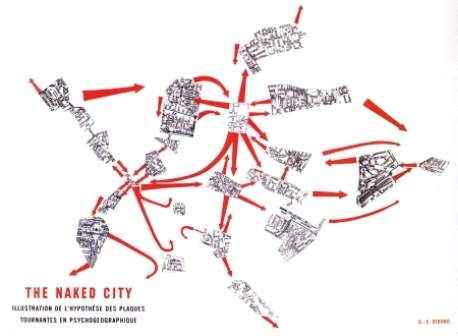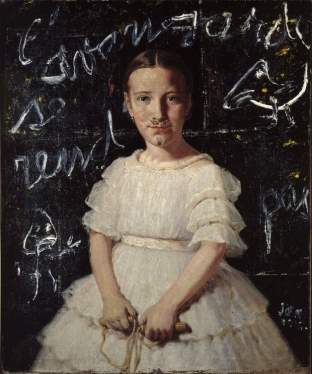Influence of the Situationist International and Punk Culture on Politics and Society
| ✅ Paper Type: Free Essay | ✅ Subject: Cultural Studies |
| ✅ Wordcount: 1337 words | ✅ Published: 23 Sep 2019 |
The main discussion in this essay will analyze historical information about Situationist International and the punk, and how they influenced politics and society. Moreover, it will also determine how Situationist International and punk culture influenced political
Situationist International was founded in 1957, and it started out as a small group of avant-garde artists and intellectuals influenced by Dada, Surrealism, and Letterism and it remained until 1969. Sadie Plant point out that, Situationist International movement also was:
…the movement also stands in a less distinct line of pleasure- seeking libertarianism, popular resistance, and autonomous struggle, and its revolutionary stance owes a great deal to this diffuse tradition of unorthodox rebellion.[1]
In addition, Situational International movement started in an artistic environment, the Situationist International eventually developed a more explicit political stance that led to expressing hostility to all aspects of the existing society. Moreover, Situationist International claimed that class society and capitalist production permeated all areas of culture, social life and knowledge. Moreover, according to Sadie Plant, the consequence of the situation was:
…with the consequence that people are removed and alienated not only from the goods they produce and consume, but also from their own experiences, emotions, creativity, and desires.[2]
Moreover, the Situationist International has a of connections with Postmodernism theory. Although the Situationist International’s theory is contrary to Postmodernism theory, the association between the two and the ultimate reason why the Situationist International was influenced by Postmodernism theory is because, according to Sadie Plant, “the traces, even the tyre-tracks of the style, vocabulary, and scope of the situationist project run across postmodernism.”[3] Moreover, Sadie Plant also pointed out that, “Poetry, pleasures, cities, and subversions are themes common to both frameworks.”[4] In addition, Sadie Plant also said that, the hostility to the Left, their desire to disrupt the distinction between aesthetics and everyday life, and their desire to find a position of language, knowledge, and social power is that, “the situationists provided postmodernism with much of the ammunition for its attacks on established genres of thought and social organization.”[5] Even if the theory of the Situationist International is against with the theory of postmodernism, for Situationist International we can see that, the postmodernism is a ultimate guideline for them.
In addition, that the Situationist International movement appears simultaneously as an artistic avant-garde. It turns out that as an experimental study of the free structure of everyday life, and finally contributing to the theoretical and practical expression of a new revolutionary debate.
Situationist International simply analyzed modern capitalist society and changed it in its own way, and although the upheaval in 1968 and their intervention led them to believe they had succeeded in helping it, the result was a failure. However, with the legacy and revolutionary movements left by the Situationist International, it was very effective in the cultural and political development of the 20th century.
Guy Debord was the leader of the Situationist International, Debord was born in Paris in1931, and Debord was a French writer, filmmaker, artist and letterist. Guy Debord criticized the capitalistic society in Paris, and expressed his position with his own design, and one of the most representative painting, Guy Debord, The Naked City, 1957 (Figure 1) is the example to show how Guy Debord have applied his thinking to the artwork. The Situationists also used a map, deformed to disrupt unpredictable trajectory was mapped under the heading, Guy Debord, The Naked City, 1957 (Figure 1). Paris plans were randomly rearranged into 19 sections. Users of the map choose their route through the city using a series of arrows that link together parts of the city. The Guy Debord, The Naked City, 1957 (Figure 1) is a guide to areas in central Paris threatened by redevelopment, it serves to maintain areas that are still worth visiting and to dispose of areas that it feels have been ruined by capitalism and bureaucracy. Simon Sadler said that:
…the subsequent redevelopment of the Parisian “Naked City,” it seems, illustrates the verity of situationist claims that urbanisme represented a drive to rationalize, homogenize, and commercialize the socioeconomic diversity of Paris.[6]
Simon Sadler also points out that, “was by far the most famous image to come out of situationism”[7], Guy Debord, The Naked City, 1957 (Figure 1) mourning the death of an old Paris ready for a city in the future, exploring the structures and use of the city, criticizing the traditional map, and examining the relationship between language, description and awareness.
The other major figure in the Situationist International was Asger Jorn. Asger Jorn was a Danish artist and led an ‘Imaginist Bauhaus’. Asger Jorn said that, the idea of an international movement for the Imaginist Bauhaus was, “a tendency aimed at forming a united organization capable of promoting an integral revolutionary cultural approach”[8] and the origin of the Imaginist Bauhaus was the CoBrA Group. The members of the group were Marxists, but they despised socialist realism and distanced themselves from American abstract expressionism. Their disfiguration paintings, which were neither conception nor abstract, were close to surrealism. However, they rejected surrealism as too ‘attention’ and emphasized the public’s plan to pursue collective and social principles. According to Karen Kurczynski, the group was well known because of the:
…theory of détournement or “subversion,” an explicitly political practice of altering the material structure of a given medium to undermine its presumed message.[9]
One of Asger Jorn’s works which is Asger Jorn, L’avant-garde se rend pas (The Avant-Garde Won’t Give Up), 1962. (Figure 2) is the example that how Asger Jorn have expressed the theory of detournement or subversion. Karen Kurczynski pointed out that, “the practice was to devalue the discourse or organization it attacked.”[10] While Asger Jorn working on the modification and disfiguration, Asger Jorn added a bizarre image or abstractly painted or made a rearrangement to an amateur school style painting that was easily founded in the market. And as a result, the revised paintings were revaluated in an artistic sense. Moreover, from textual intervention in aesthetic theory to books, ceramics, and large tapestries, Asger Jorn redefined the post-war paintings as important practices related to the numerous new experimental media he was involved in. Each form was embodied in his combination of clear criticism of modernism and further social exclusion in destructive aesthetics, excitement, irony, parody, materialism, populism, and classicalism.

Figure 1. Guy Debord, “The Naked City”, 1957.

Figure 2. Asger Jorn, L’avant-garde se rend pas (The Avant-Garde Won’t Give Up), 1962.
Jamie Reid’s “God Save The Queen”, 1977 (Figure 3) is one of the good examples to relate on to the influence between punk and Situationist International. The work has several variations, but the most symbolic version is the black-and-white picture of the Queen on the Union Jack flag. The Queen’s eyes and mouth were torn, appearing under the names of single and band, a mixture of different fonts cut off from the headlines, and very similar to that of ransom. The black-and-white image above the bright flag creates a distinct visual contrast, allowing you to concentrate more on the color below the queen image.

Figure 3. Vivienne Westwood, “Destroy T-Shirt”, 1977.
- Plant, Sadie. The Most Radical Gesture. London: Routledge, 2006.
- Debord, Guy, and Tom McDonough. Guy Debord And The Situationist International. London, MIT, 2004.
- Jorn, Asger. “Against Functionalism (Asger Jorn)”. Bopsecrets.Org, Last modified 2011. http://www.bopsecrets.org/SI/asger-jorn/functionalism.htm.
- Knabb, Ken. Situationist International Anthology. Berkeley: Bureau of Public Secrets, 1981.
- Zweifel, Stefan, Juri Steiner, and Heinz Stahlhut. In Girum Imus Nocte Et Consumimur Igni. Zürich: JRP/Ringier, 2006.
- Kurczynski, Karen. The Art And Politics Of Asger Jorn. Surrey: VT Ashgate, 2014.
- Sadler, Simon. The Situationist City. Cambridge: The MIT Press, 2001.
[1] Sadie Plant, The Most Radical Gesture London: Routledge, 2006., 1.
[2] Ibid., 1.
[3] Ibid., 5.
[4] Ibid., 5-6.
[5] Sadie Plant, The Most Radical Gesture London: Routledge, 2006., 6.
[6] Simon Sadler, The Situationist City Cambridge: The MIT Press, 2001., 61.
[7] Simon Sadler, The Situationist City Cambridge: The MIT Press, 2001., 61.
[8] Asger Jorn. “Against Functionalism (Asger Jorn)”, Bopsecrets.Org, Last modified 2011.
[9] Karen Kurczynski, The Art And Politics Of Asger Jorn Surrey: VT Ashgate, 2014., 1.
Cite This Work
To export a reference to this article please select a referencing stye below:
Related Services
View allDMCA / Removal Request
If you are the original writer of this essay and no longer wish to have your work published on UKEssays.com then please click the following link to email our support team:
Request essay removal


